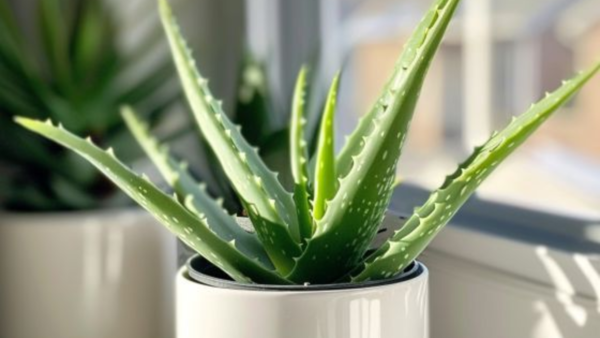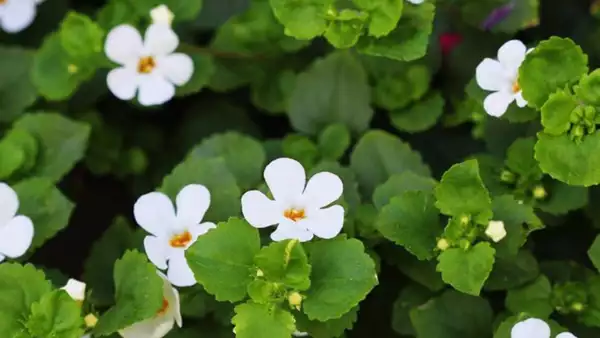Natural remedies are a great source of maintaining and attaining long hair with clear scalp results that do not harm your hair in any manner.Nature has several plants with amazing hair care properties which have been used since ancient times and are used in oils, shampoos, and hair masks for better results. As plants are a natural approach to treat many issues, above all lies the very common problem of hair growth. Let’s learn about 5 natural plants with amazing hair growth benefits, and how they can be used in our hair care regime.
Aloe Vera
One of the most versatile and commonly used plants for hair and skin, the very humble aloe vera is loaded with hair care benefits and is used in several hair care products as well. You can directly use the gel extracted from the plant and combine it with different natural ingredients to treat your hair issues. The pH level of the plant is very low making it best for the scalp and thus creates no harm. Aloe vera gel also contains minerals, copper, and zinc, and also cures dandruff, promoting hair growth.

(Image Credits: Pinterest)
How to use-
Step 1: Extract some natural aloe vera gel and add two to three teaspoons of coconut oil.
Step 2: Massage it thoroughly for half an hour and wash it with aloe vera-infused shampoo.
Step 3: Complete the wash with a good conditioner and see the results.
Rosemary
Rich in anti-bacterial, antioxidant, and vitamins, rosemary is one of the most prominent and beneficial herbs for hair development which stimulates blood circulation, thus promoting hair growth. It also slows down premature hair loss and calms the itchy scalp by keeping the scalp moisturised and conditioned. If taken as oil then only the blood circulation rises and it can be used with a carrier oil as well adding the benefit of prevention of premature greying as well.
How to use-
Step 1: Massage rosemary oil directly into your scalp, or dilute it with other carrier oil such as coconut or almond oil for better results.
Step 2: Keep it for an hour, or overnight as well, and simply rinse off with a good shampoo and conditioner.
Hibiscus
Rich in flavonoids and amino acids, hibiscus flowers and leaves stimulate blood flow to your hair follicles and encourage new hair formation. These amino acids also encourage healthy hair growth by triggering keratin formation around the follicle cells and protecting our hair from UVB rays as well. It combats oiliness on the scalp and keeps away dandruff, and split ends as well. Trapping moisture in the hair shafts gives flexibility to the strands and is great for strong hair growth.
How to use-
Step 1: Take 3-4 hibiscus flowers and boil them with water.
Step 2: Strain the water and use it as a mist every day around the scalp and see the result. You can also add this mist to your oil and apply it twice a week.
Amla aka Gooseberry
One of the most enriching and popular plants for hair care, amla has a variety of medicinal properties. It can be used as an oil, shampoo, or raw, acting as a natural conditioner, which strengthens our locks and promotes hair growth as well. Rich in vitamin C, it produces collagen protein and helps in the process of hair growth, regenerating hair follicles by replacing dead cells with new ones.
How to use-
Step 1: Squeeze the amla juice to your scalp directly and massage it for 5 minutes.
Step 2: Leave it for 10 minutes and then rinse it off with lukewarm water and a good amla shampoo.
Bacopa aka Brahmi
Brahmi helps in attaining strong and bouncy hair with a gorgeous end. Stimulating the blood circulation level of the scalp, helps the hair to grow longer and thicker, acting as a natural protector as well. It lessens the risk of split ends, and adds shine to the entire mane, reducing scalp infection, irritation, and issues of itchy flakes as well.

(Image Credits: Pinterest)
How to use-
Step 1: Dry and grind brahmi leaves with carrier oil and form a fine pastel.
Step 2: You can also add herbs like tulsi, amla, and neem.
Step 3: Apply this paste and leave it for an hour, and then rinse it off with lukewarm water and shampoo.
From Avocado to Zinc: Key nutrients for healthy skin and how to get them
All these plants are easily found around us and can be homegrown as well. You can use them as oil, in shampoos, or as hair masks as well as blended with other natural ingredients. These products should be used at least twice or thrice a week to attain the desired results. You can also find products with these natural ingredients and can thus induce them into your hair care routine.